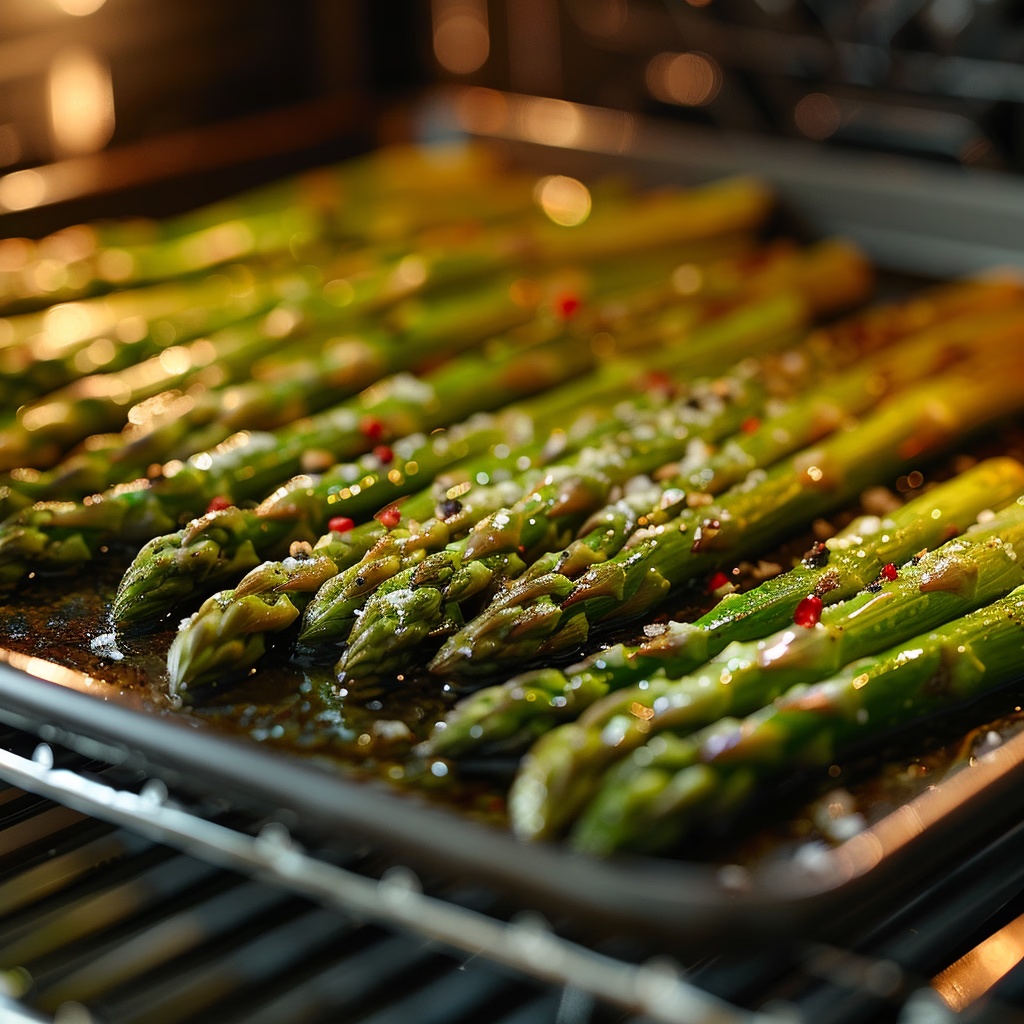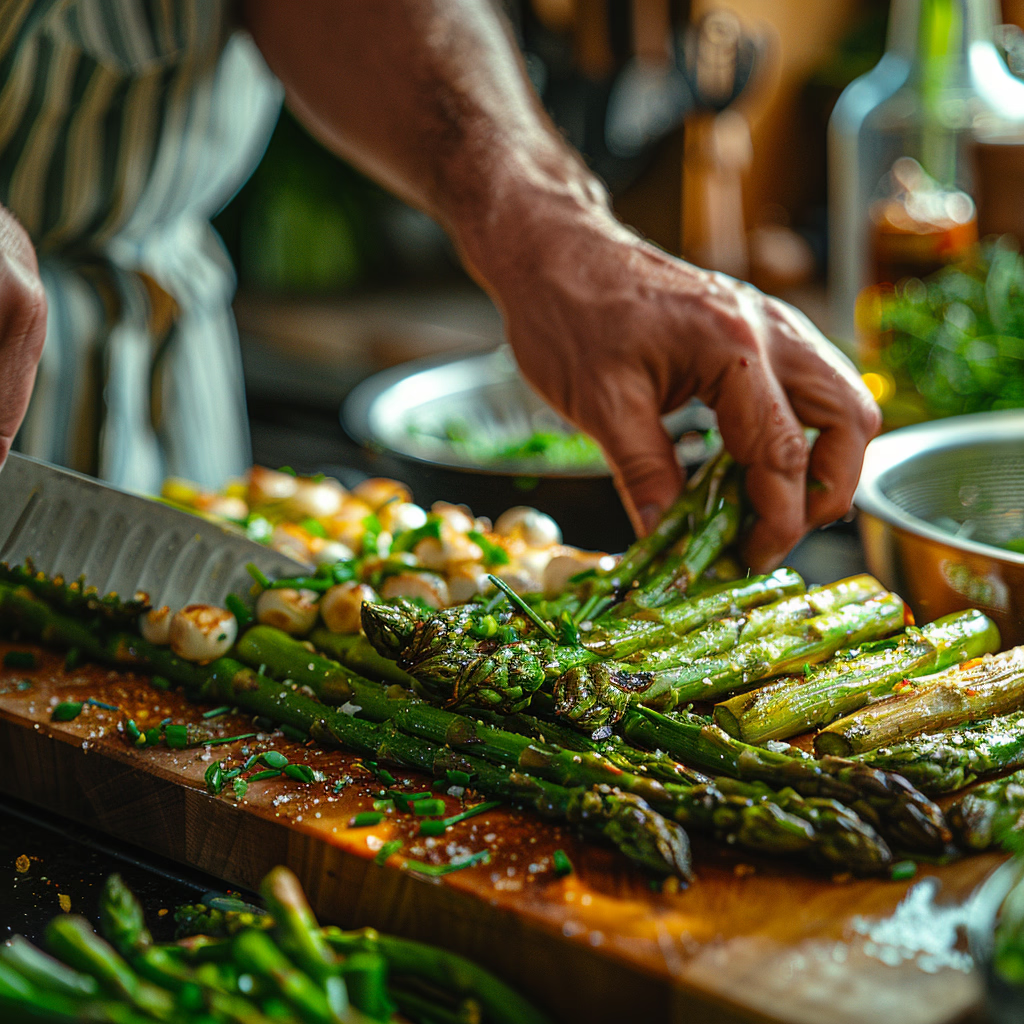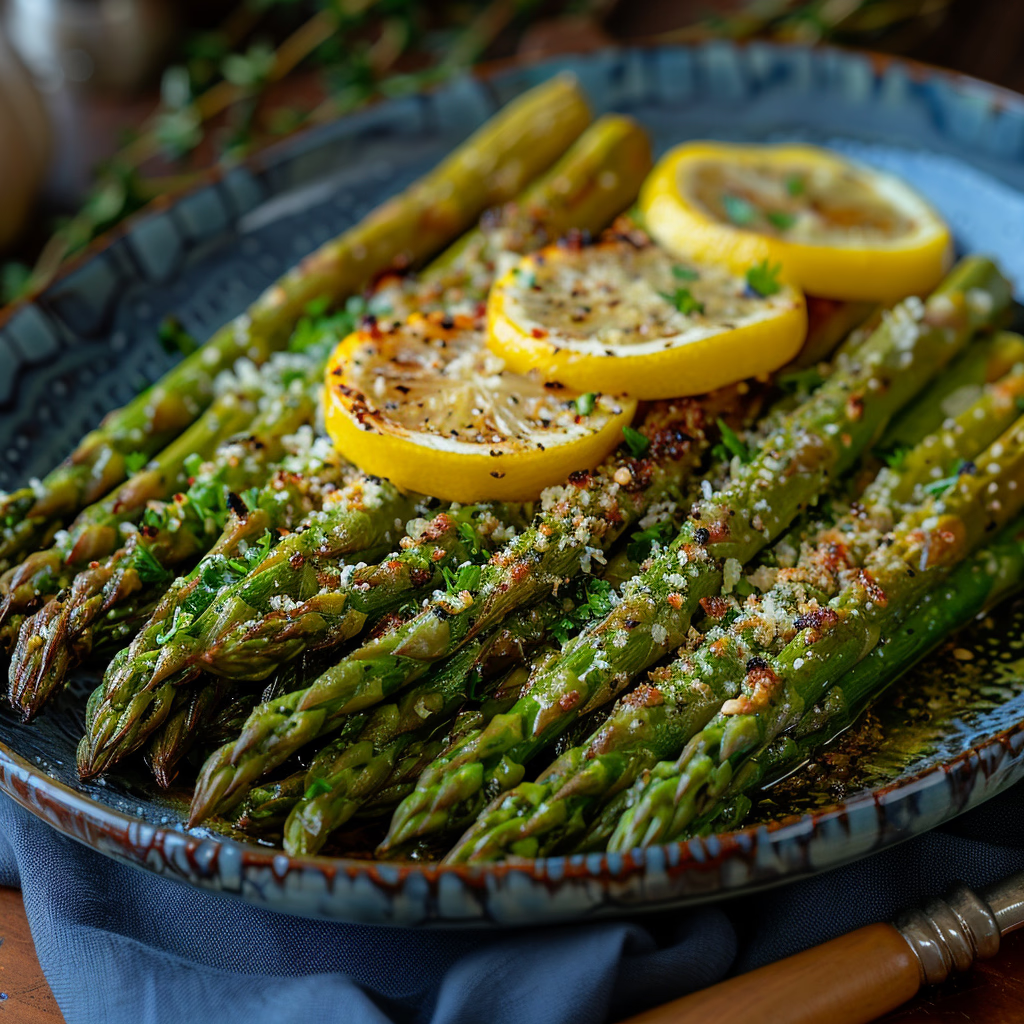Introduction:What cooking method is best for asparagus
Asparagus, with its tender texture and rich flavor, is a beloved vegetable across the globe. However, the way you cook it can make or break its natural goodness. Whether you’re looking for a quick side dish, a gourmet recipe, or simply trying to make the most of this nutrient-packed veggie, choosing the best cooking method for asparagus is crucial. From boiling to roasting, steaming to grilling, this guide explores each method in depth to help you create delicious asparagus dishes every time.
Part 1: Exploring the Best Cooking Methods for Asparagus.What cooking method is best for asparagus
Why Cooking Method Matters
Cooking asparagus the right way ensures that its flavor, texture, and nutrients are preserved. While asparagus can be prepared in many ways, some methods highlight its earthy sweetness better than others. Selecting the right cooking technique isn’t just about taste; it’s about retaining the vegetable’s vibrant color, crispness, and health benefits.
Nutritional Profile of Asparagus.What cooking method is best for asparagus
This powerhouse vegetable is low in calories yet packed with vitamins and minerals. Asparagus contains high levels of vitamin K, vitamin C, and folate, which are essential for maintaining bone health, boosting immunity, and supporting overall well-being. Additionally, it’s a rich source of dietary fiber, making it perfect for digestion.
Health Benefits of Asparagus
Eating asparagus offers multiple health benefits, from improving digestion to aiding in weight management. Its antioxidants, including glutathione, help fight oxidative stress, reducing the risk of chronic diseases. Moreover, asparagus is a natural diuretic, making it ideal for detoxifying the body and preventing bloating. With its anti-inflammatory properties, it’s also beneficial for heart health and managing blood pressure.
Part 2: Preparation Techniques for Asparagus.What cooking method is best for asparagus
Selecting Fresh Asparagus

When it comes to cooking asparagus, starting with the freshest stalks is key. Always look for vibrant green stalks with firm tips that are tightly closed. If the tips appear mushy or the stalks seem limp, the asparagus is past its prime. Thicker stalks are better for roasting and grilling, while thinner ones are ideal for steaming and sautéing.
To store fresh asparagus, wrap the ends in a damp paper towel and place them in a plastic bag in the refrigerator. This keeps them crisp and fresh for up to four days. For longer storage, blanch and freeze them.
Proper Cleaning and Trimming
Cleaning asparagus is a simple yet crucial step before cooking. The stalks often carry dirt or grit, especially near the tips. Rinse them thoroughly under cold water while gently rubbing the tips to remove any debris. Once cleaned, pat them dry with a clean kitchen towel.
Trimming the woody ends is another important step. Snap the asparagus near the base, where it naturally breaks. This ensures you’re left with the tender, edible part. For a cleaner presentation, use a sharp knife to cut the ends evenly after snapping them.
Peeling Asparagus: When and How
Peeling is usually reserved for thicker asparagus stalks, as their outer layer can be tough and fibrous. To peel, lay the asparagus flat on a cutting board and use a vegetable peeler to remove the outer layer from just below the tip to the base. This method preserves the tender interior while ensuring a consistent texture when cooked.
Peeling isn’t always necessary for thin stalks, but it’s a handy trick when you’re aiming for a more refined presentation or a gourmet touch.
Part 3: Cooking Methods for Asparagus.What cooking method is best for asparagus
Cooking asparagus can be as simple or as sophisticated as you desire. Each method highlights different qualities of this versatile vegetable, from its sweet, nutty flavor to its tender yet crisp texture. Let’s explore some of the most popular cooking techniques.
Boiling Asparagus
Boiling is one of the easiest and quickest ways to cook asparagus. This method is particularly great for achieving tender, evenly cooked stalks.
Steps to Boil Asparagus
- Fill a pot with water and add a generous pinch of salt.
- Bring the water to a rolling boil, then add the asparagus stalks.
- Cook for 2-5 minutes, depending on thickness, until the stalks are vibrant green and tender.
- Immediately transfer the asparagus to a bowl of ice water to stop the cooking process and preserve the color.
Pros and Cons of Boiling
Pros:
- Quick and straightforward.
- Retains the vibrant green color if done right.
Cons: - Can lead to mushy asparagus if overcooked.
- Some nutrients, like vitamin C, may leach into the water.
Steaming Asparagus
Steaming is another simple method that helps retain the vegetable’s nutrients and texture. This method is ideal if you’re aiming for a clean and fresh flavor profile.
Steps to Steam Asparagus
- Place a steaming basket over a pot with an inch of water.
- Bring the water to a simmer and add the asparagus to the basket.
- Cover the pot and steam for 3-6 minutes until the stalks are tender yet crisp.
Pros and Cons of Steaming
Pros:
- Preserves most of the nutrients.
- Produces tender and crisp asparagus without any added fat.
Cons: - May lack depth of flavor compared to roasting or grilling.
Roasting Asparagus
Roasting brings out the natural sweetness and nuttiness of asparagus, making it one of the most flavorful methods.
Steps to Roast Asparagus
- Preheat your oven to 400°F (200°C).
- Toss the asparagus with olive oil, salt, and pepper.
- Spread the stalks in a single layer on a baking sheet.
- Roast for 10-15 minutes, shaking the pan halfway through for even cooking.
Pros and Cons of Roasting
Pros:
- Intensifies flavor through caramelization.
- Perfect for creating crispy tips.
Cons: - Takes slightly longer than other methods.
Part 4: Advanced Cooking Methods for Asparagus.What cooking method is best for asparagus
While boiling, steaming, and roasting are common methods, there are advanced techniques that offer even more variety and culinary flair. These methods can elevate your asparagus dishes from everyday to extraordinary.
Grilling Asparagus
Grilling asparagus adds a smoky, charred flavor that pairs beautifully with its natural sweetness. This method works best for medium to thick stalks, as thinner ones can fall through the grill grates.
Steps to Grill Asparagus
- Preheat your grill to medium-high heat.
- Toss the asparagus with olive oil, salt, and pepper.
- Place the spears perpendicular to the grates or use a grill basket to prevent them from falling through.
- Grill for 6-8 minutes, turning occasionally, until lightly charred and tender.
Pro Tips:
- Add a squeeze of fresh lemon juice after grilling for a bright, tangy finish.
- For an extra layer of flavor, sprinkle the asparagus with garlic powder or smoked paprika before grilling.
Pros and Cons of Grilling
Pros:
- Imparts a unique smoky flavor.
- Ideal for outdoor cooking and summer meals.
Cons: - Requires access to a grill.
- Thin stalks may cook unevenly or burn.
Sautéing Asparagus
Sautéing is a quick and versatile method, ideal for incorporating asparagus into stir-fries, pasta dishes, or as a standalone side.
Steps to Sauté Asparagus
- Heat a tablespoon of olive oil or butter in a skillet over medium heat.
- Add the asparagus and season with salt and pepper.
- Cook for 5-7 minutes, stirring frequently, until the stalks are tender and slightly browned.
Pro Tips:
- Add minced garlic or shallots during the last minute for extra flavor.
- For a touch of elegance, deglaze the pan with a splash of lemon juice or vegetable broth.
Pros and Cons of Sautéing
Pros:
- Fast and easy, taking less than 10 minutes.
- Allows for customization with various seasonings.
Cons: - Requires constant attention to prevent overcooking.
Blanching Asparagus
Blanching is a technique often used to prepare asparagus for salads or freezing. It involves briefly boiling the vegetable, followed by plunging it into ice water.
Steps to Blanch Asparagus
- Bring a pot of salted water to a boil.
- Add the asparagus and cook for 1-2 minutes until vibrant green.
- Immediately transfer the stalks to a bowl of ice water to halt the cooking process.
Pros and Cons of Blanching
Pros:
- Maintains a bright green color and crisp texture.
- Ideal for prepping asparagus for salads or freezing.
Cons: - Not suitable for serving as a standalone dish.
Part 5: Recipes for Asparagus Dishes
Cooking asparagus can be as simple or elaborate as you like, but incorporating it into flavorful recipes is where this vegetable truly shines. Below, we present a classic roasted asparagus recipe, including a detailed list of ingredients, step-by-step instructions, and nutritional information.
Classic Roasted Asparagus Recipe
Ingredients:
- 1 pound (450g) fresh asparagus spears
- 2 tablespoons olive oil
- 1 teaspoon sea salt
- ½ teaspoon freshly ground black pepper
- 1 clove garlic, minced (optional)
- Juice of ½ a lemon (for garnish)
- 2 tablespoons grated Parmesan cheese (optional)
Step-by-Step Instructions:
- Preheat the Oven:
Preheat your oven to 400°F (200°C). Line a baking sheet with parchment paper or aluminum foil for easy cleanup. - Prepare the Asparagus:
Wash the asparagus thoroughly under cold running water and pat dry with a kitchen towel. Trim the woody ends by snapping them off or cutting them with a knife. - Season the Asparagus:
Arrange the asparagus in a single layer on the prepared baking sheet. Drizzle with olive oil, then sprinkle with sea salt, black pepper, and minced garlic (if using). Toss gently to ensure even coating. - Roast in the Oven:
Place the baking sheet in the oven and roast for 12-15 minutes, depending on the thickness of the stalks. Shake the pan halfway through cooking to ensure even roasting. - Garnish and Serve:
Remove the asparagus from the oven and immediately squeeze fresh lemon juice over the spears. Sprinkle with grated Parmesan cheese if desired, and serve warm.
Nutritional Content (per 100g):
| Nutrient | Amount |
|---|---|
| Calories | 35 kcal |
| Protein | 2.5 g |
| Fat | 2.1 g |
| Carbohydrates | 3.5 g |
| Fiber | 1.9 g |
| Vitamin C | 6.5 mg |
| Iron | 1.2 mg |
Additional Variations
- Garlic Butter Asparagus: Substitute olive oil with melted butter and add 1 teaspoon of garlic powder for a richer flavor.
- Spicy Asparagus: Add a pinch of red chili flakes before roasting for a hint of heat.
- Cheesy Asparagus: Top the roasted asparagus with shredded mozzarella cheese during the last 5 minutes of cooking.
Part 6: Common Mistakes When Cooking Asparagus.What cooking method is best for asparagus

Even the most seasoned cooks can make mistakes when preparing asparagus. To ensure your dishes turn out perfectly every time, avoid these common pitfalls.
Overcooking Asparagus
Overcooked asparagus becomes mushy, loses its vibrant color, and can have an unpleasant, stringy texture. Timing is crucial, no matter the cooking method. Whether you’re boiling, steaming, or roasting, keep a close eye on the asparagus. It’s better to slightly undercook it, as the residual heat will continue to soften the stalks.
Not Prepping Properly
Skipping essential preparation steps, such as washing and trimming, can result in unappetizing dishes. Always rinse asparagus thoroughly to remove dirt and debris, especially near the tips. Additionally, failing to trim the woody ends can leave your dish with tough, chewy pieces that detract from the overall experience.
Using the Wrong Cooking Method
Not every cooking method suits every recipe. For instance, boiling is great for quick preparation, but it doesn’t bring out the deep, caramelized flavors that roasting does. Similarly, grilling may not work for very thin asparagus, as it could dry out or burn. Choose your method based on the desired flavor and texture.
Overcrowding the Pan
When roasting or sautéing, overcrowding the pan prevents proper caramelization. Instead of crisp-tender spears, you’ll end up with steamed, limp asparagus. Always arrange asparagus in a single layer, leaving space between the stalks to allow even cooking.
Skipping Seasoning
While asparagus has a delicate flavor, it benefits greatly from seasoning. A simple sprinkle of salt and pepper can enhance its natural sweetness, while additions like garlic, lemon, or Parmesan take it to the next level. Skimping on seasoning can result in bland dishes that fail to impress.
Ignoring Thickness Variations
The thickness of asparagus varies greatly and directly impacts cooking time. Thicker stalks take longer to cook than thinner ones. To ensure even cooking, you can separate stalks by size or adjust the cooking time accordingly.

